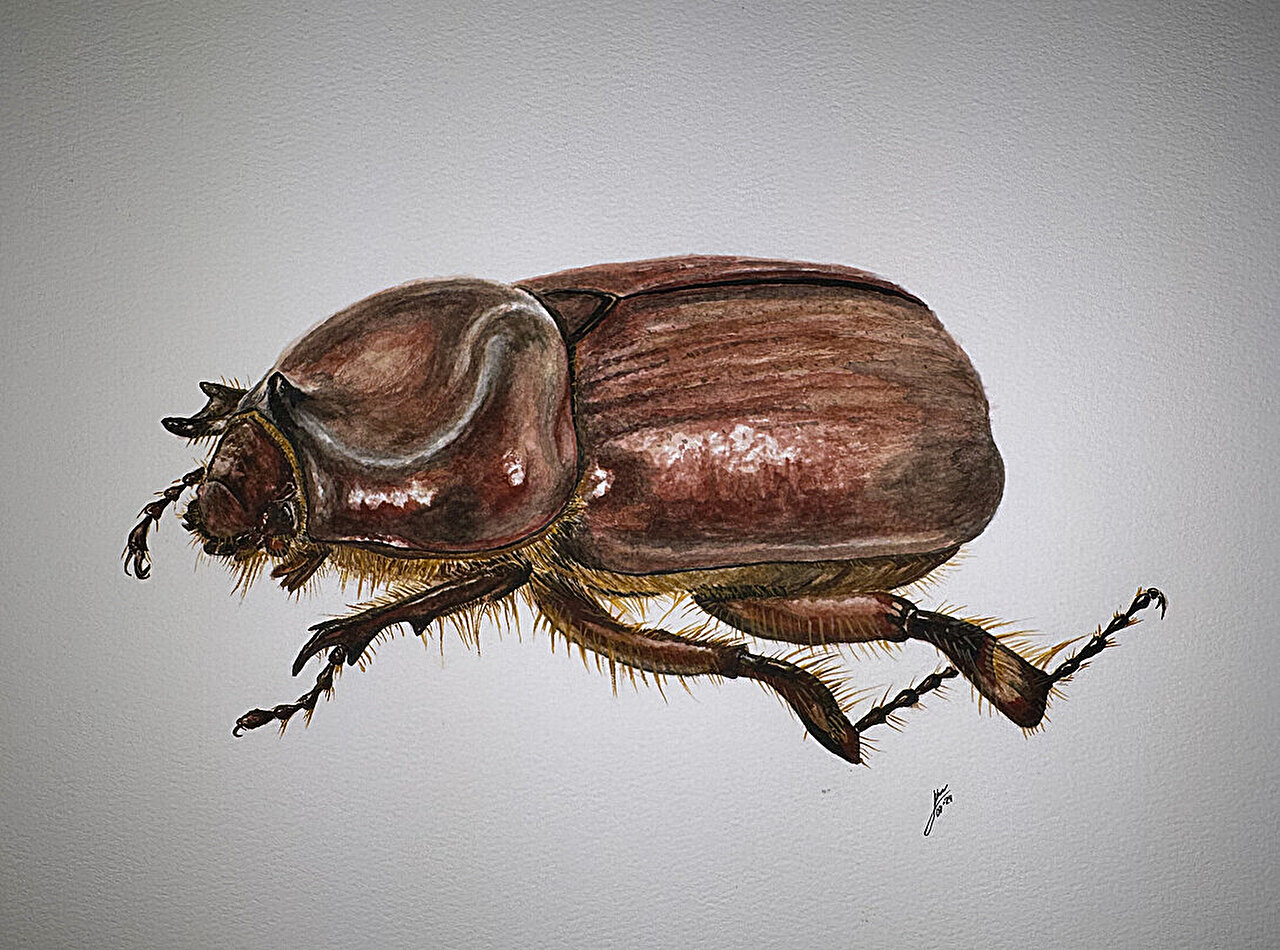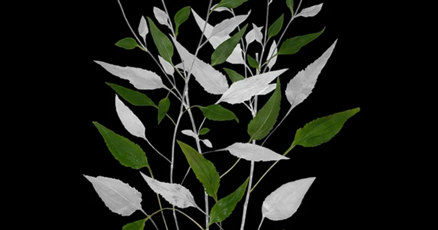The Speed Art Museum has re-engaged with its Native American art collection and reinstalled the Native American art galleries. Some of the work has never been on view before.
Dr. fari nzinga, curator of the Native American and the African Art collections, and Sirene Martin, curatorial intern, have worked together to ensure compliance with the Native American Graves Protection and Repatriation Act (NAGPRA) of 1990, which was revised in 2024. Expanding their scope beyond legal compliance, nzinga and Martin have been cultivating relationships with Native American culture-bearers (Tribal members who carry forward arts and traditions) as well as Tribal leaders and liaisons.
The recently reinstalled galleries of Native American art present not only a recalibrated perspective of the Speed’s existent collection, but also new acquisitions and loans from the unequivocal Tia Collection.
The Legality And Ethics Of Displaying Art And Artifacts
NAGPRA provides for the ownership or the control of Native American cultural artifacts and ancestral remains, whether they are excavated or discovered on Tribal or Federal land. NAGPRA grants ownership of human remains and funerary objects to the lineal descendants of Native Americans, and if descendants cannot be confirmed, the Congressional act grants ownership to the Tribal or Native Hawaiian organization on whose land the objects are found. If cultural artifacts or ancestral remains are found on Federal land, NAGPRA grants ownership to the tribe recognized as aborginally dwelling the area (unless a different Tribe makes a stronger claim to ownership and provides stronger evidence). This legislation was enacted into law on November 16, 1990.
NAGPRA was revised on January 12, 2024. The revision replaces definitions and procedures for lineal descendants, Indian Tribes, Native Hawaiian organizations, museums, and Federal agencies. These revisions were made in an effort to both clarify and improve the processes involved in the disposition or repatriation of Native American human remains, funerary objects, sacred objects, and objects of cultural patrimony.
Even before these changes became effective, the Speed Art Museum had already decided not to have items on view that could be interpreted as sensitive, especially in regards to categories of objects that are protected by NAGPRA. In a prior installation, there had been a case displaying pipe bowls and stems. “Because there was information about where these items came from and who they had been collected from,” nzinga says, “and I’m air quoting ‘collected’ because when you’re a prisoner of the military, do you really have full consent to be able to say ‘sure, you can have this item that’s used in sacred ceremonies?’ We wanted to get started taking those things off display and explaining to our stakeholders here at the museum why [they] might not see some of [their] favorite items any longer.”
Long before before nzinga joined the Speed, there was a member of the curatorial staff who had attempted to begin the process, “but because there was no follow through over those many years … we brought Sirene to help us manage everything that it was going to take to be able to prioritize the repair of those relationships.”
James Hart Photography” class=”uk-display-block uk-position-relative uk-visible-toggle”>

James Hart Photography
Arthur Amiotte,Oglála Lakȟóta Oyáte (Oglala Lakota Nation), Buffalo Image, 1973, oil on canvas, 18 by 24 inches. Courtesy of Tia Collection, Santa Fe, New Mexico.
Curating The Native American Art Collection
The story of how the Native American art collection has changed — especially since the recent revisions to NAGPRA — began in earnest when nzinga joined the museum in June 2022, and was then made curator in December of 2022. There was an expectation among museum leadership that there would be a reinstallation of the collection, followed soon after by the opportunity to change the collection’s location within the museum. “So that was really exciting and that gave us the kind of impetus.”
In her first year as curator, nzinga initiated the Curatorial Advisory Council, comprised of Native American artists and curators and people who can connect the museum to artists, curators, and tribal representatives. “It’s really helping push us forward,” she says, “In terms of our interpretation and in terms of our relationship-building practices as well.”
Martin was hired in June 2023. The preponderance of her work has been to facilitate correspondence between the Speed and Tribal preservation historical officers. “I was initially brought on to help [nzinga] start correspondence … to Tribes all across the nation, letting them know that we do indeed have a Native American collection and that we are starting the process to be in compliance with NAGPRA,” she says. That invitation was sent soon after Martin’s arrival, in early July 2023, and has been well received. “We focused our response to Tribes that we have identified to have connections with the belongings in our collection.”
“We’ve been working with the Southern Cheyenne Tribe for six to eight months,” Martin says. “We’re really excited for the work to be in compliance with the law and to be in the right relationship with the people and cultures that are that have birthed our wonderful collections.”
The Speed is proud that nothing in the Native American art gallery is entangled in any questionable politics. At the same time, the Speed wants to modernize and update the work presented in the Native American galleries because there has been such strong emphasis on historical material like beadwork, clothing, and hide paintings from The Reservation Era (1850–1887). Items with their provenance from that time of divestment and removal of Native Americans from their homelands is questionable because of issues of consent. “We want to have an ethical stance and we want to be proactive in helping the tribes that want any of these items returned to them,” nzinga says, “We want to use this as an opportunity for us to learn further about the art and the culture of the people, because that’s what’s in our collection.”
Courtesy of the artist and Bockley Gallery” class=”uk-display-block uk-position-relative uk-visible-toggle”>

Courtesy of the artist and Bockley Gallery
Frank Big Bear, Gaa-waabaabiganikaag Anishinaabeg (The White Earth Band of the Minnesota Chippewa-Ojibwe Tribe), Ghost Dance of the Great Mystery, 2022, color pencil on black illustration board, 80 by 96 inches. Courtesy of Tia Collection, Santa Fe, New Mexico.
Connecting With The Tia Collection
Some of the work in the Native American galleries at the Speed is on loan for one year from the Tia Collection, a lending collection based in Santa Fe, New Mexico. “We borrowed some really cool things,” nzinga says. “We’re so excited to present some of those artists to our visitors because we wanted to give people a sense of the dynamism of Native American art.”
One of these works is a painting by Arthur Amiotte, a scholar, art historian, and artist from the Oglala Lakota Nation. “We reached out to him because he is in his 80s and lives in Pine Ridge, South Dakota,” nzinga says. “We just wanted to let him know that we’re here at the museum and we’re borrowing [your work] and we’re so honored to share that with our museum audiences. And he wrote us back a letter, and it was just so sweet.” The painting is “Buffalo Image,” an oil painting on canvas, completed in 1973.
A more contemporaneous piece on loan from the Tia Collection is “Ghost Dance of the Great Mystery” (2022) by Frank Big Bear of the White Earth Band of the Minnesota Chippewa-Ojibwe Tribe, which nzinga describes as “masterful.” It is a six-panel work rendered in color pencil on black illustration board. “The level of detail is freaking amazing, and the maximalism of the composition is frenetic,” she says. “You feel the energetic vibration of the ethereality emanating off these panels. We really encourage people to come in and experience it.”
Other works on loan include “Maiden with Basket, From Pottery Mound” (1983), an acrylic painting on canvas by Linda Lomahaftewa of the Choctaw Nation of Oklahoma and the Hopi people; and “Diné Vegetal Dye Chart” (c. 1970) by the Navajo artist Vera Myers, which is crafted with vegetal dyes, vegetal matter, and handwoven yarns.
Some gallery spaces only present their collections from behind glass, suggesting to viewers that the objects are suspended in time, but nzinga wants visitors to the Speed to know that Native American people are still making art. She wants to situate the work within a cultural context that suggests the present moment, which is a rupture from — yet also in continuity with — the past. She also wants to amplify the voices of Native people whenever possible, including quotations from artists on the placards in the gallery, so viewers can read the artists’ own words to help understand the work.
“I think we’ve tried our best to prioritize Native voices in our gallery, as two Non-native people,” Martin says.
James Hart Photography” class=”uk-display-block uk-position-relative uk-visible-toggle”>

James Hart Photography
Linda Lomahaftewa, Chahta Okla (Choctaw Nation of Oklahoma), Hopituh Shi-nu-mu (Hopi), Maiden with Basket, From Pottery Mound, 1983, acrylic on canvas, 18 by 18 inches. Courtesy of Tia Collection, Santa Fe, New Mexico.
The Collective Excitement Around The Collection
In addition to Martin’s work in relationship building, nzinga also invited her to support her in the curation process of the gallery, specifically in collections research and helping refine the acquisition strategy. During their shared efforts, they found some hidden gems in the museum’s collection that have never been on display before now.
Rather than hermetically sealed specimens detached from the contemporary world, the Native American collection at the Speed Art Museum is a living process. “We’re not just acquiring new things and borrowing things from the outside,” nzinga says. Her passion for her work is palpable. “We’re going down and coming back up from storage like, ‘yo, did you know this was here? Let’s put it on view!'”
A radiant example of this curatorial experience can be seen in the section of the gallery dedicated to southwestern artists. In it is the work of Maria Martinez, a historical Puebloan figure who innovated black-on-black pottery with geometric designs. “So what’s crazy is we have had Maria Martinez in our collection for decades, and it never had been shown,” nzinga says.
The Speed wants to build their Native American collection and fortify it. “Our acquisition strategy is anchoring our contemporary materials within our historical strengths,” Martin says. “We’re really trying to create a sense of continuity with our collection, especially as we work with our Learning, Engagement, and Belonging Department and with the artist talks” scheduled for autumn 2024.
“We’re thinking about contemporary in the longer term, not just the hyper ‘right now,’ but we’re taking the opportunity in this presentation of Native American art to introduce people to some of the important names,” nzinga says. Her hope is that if visitors know more about an artist, they will come back and see something new in another piece, or be able to contextualize Native American art in a different way. “That’s what we love.”
Considering the amount of Native American art in the Speed’s permanent collection that has never been on view before and the acquisition of contemporary Native American art, an ongoing dialogue with the people who created — and continue to create — the work is essential. “We can at least begin to build relationships that are beautiful and fruitful … just acknowledging artists and their impact on the culture,” nzinga says.
The Speed Art Museum is collectively excited to see what the Native American art collection will become. As nzgina and Martin share their feelings of being honored to do the work of displaying this art and being able to talk about it with visitors.
The reinstalled Native American galleries opened on April 5 (then briefly closed on April 10 in response to an HVAC issue in the building), and will remain open. Items on loan from the Tia Collection will be on view through March 2025.










 Jamie Schulze and Amber-Dawn Bear Robe (PHOTOGRAPHY: Courtesy of Tira Howard)
Jamie Schulze and Amber-Dawn Bear Robe (PHOTOGRAPHY: Courtesy of Tira Howard) Ayimach Horizons by Jason Baerg (PHOTOGRAPHY: Courtesy of Tira Howard)
Ayimach Horizons by Jason Baerg (PHOTOGRAPHY: Courtesy of Tira Howard) Victoria’s Arctic Fashion (PHOTOGRAPHY: Courtesy of Tira Howard)
Victoria’s Arctic Fashion (PHOTOGRAPHY: Courtesy of Tira Howard) Jamie Okuma display (PHOTOGRAPHY: Courtesy of Sandra Hale Schulman)
Jamie Okuma display (PHOTOGRAPHY: Courtesy of Sandra Hale Schulman)













